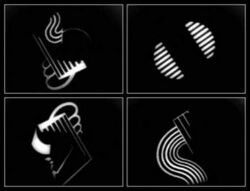Engineering:Absolute film
Absolute film is a film movement begun by a group of visionary artists in Germany in the 1920s: Hans Richter, Walter Ruttmann, Oskar Fischinger and the Swede Viking Eggeling.
These artists present different approaches to abstraction-in-motion: as an analogue to music, or as the creation of an absolute language of form, a desire common to early abstract art. Ruttmann wrote of his film work as 'painting in time.' They used rudimentary handicraft, techniques, and language in their short motion pictures that refuted the reproduction of the natural world, instead, focusing on light and form in the dimension of time, impossible to represent in static visual arts.
In 1926, Hans Richter stated that the absolute film originated in the scroll sketches that Viking Eggeling made in 1917-18.[1]
Examples
- Rhythmus 21 (Hans Richter, 1921)
- Symphonie diagonale (Viking Eggeling, 1924)
- Opus IV (film) (Walter Ruttmann, 1925)
- Seelische Konstruktionen (Oskar Fischinger, 1927)
See also
- Abstract film
- Experimental film
- Cinéma pur
- Non-narrative film
- Abstract animation
- Visual music
References
- ↑ G: Zeitschrift für elementare Gestaltung, nr 5-6, 1926, p.5. English reprint edition edited by Detlef Mertins & Michael W. Jennings; Translated by Steven Lindberg & Margareta Ingrid Christian; Tate Publishing, 2010.
Bibliography
- James, David, The Most Typical Avant-Garde [UC Press]
- Malcolm Le Grice, Abstract Film and Beyond. [MIT Press, 1981]
- William Moritz, Optical Poetry. [Indiana University Press, 2004]
- Sitney, P. Adams, Visionary Film [Oxford University Press, 2002]
- William Wees, Light Moving in Time. [University of California Press, 1992]
- Bassan, Raphaël, Cinema and abstraction : from Bruno Corra to Hugo Verlinde [Senses of Cinema, No. 61, December 2011] (http://www.sensesofcinema.com/2011/feature-articles/cinema-and-abstraction-from-bruno-corra-to-hugo-verlinde/)


